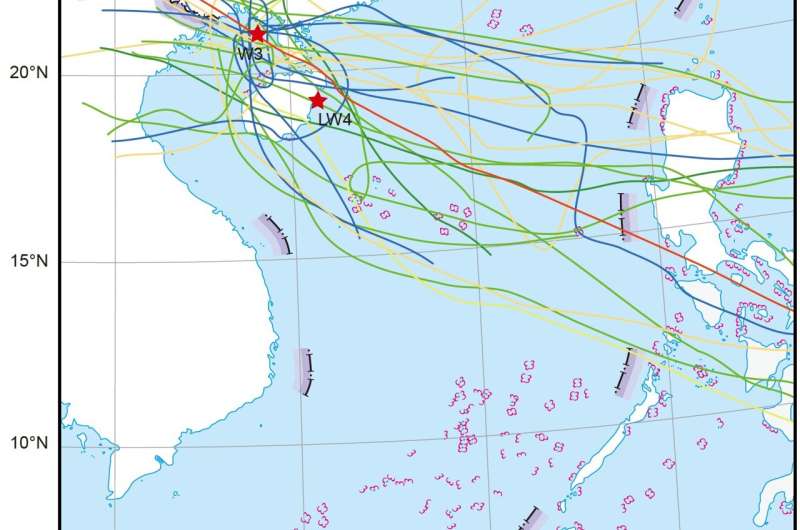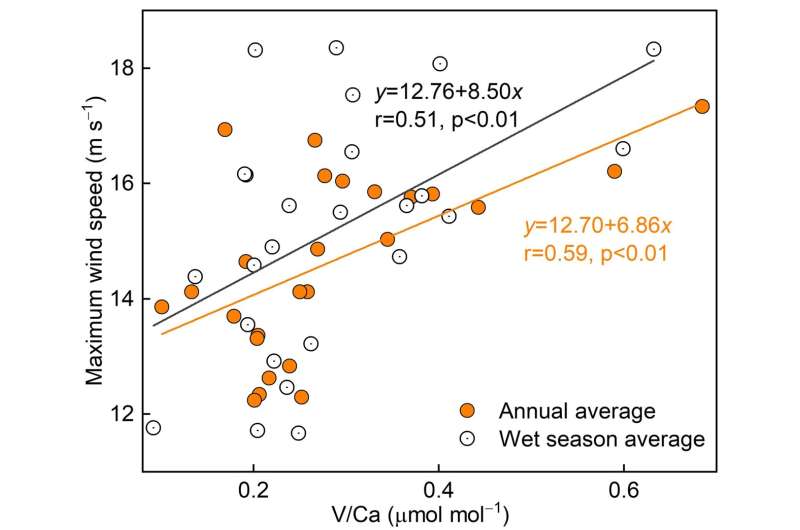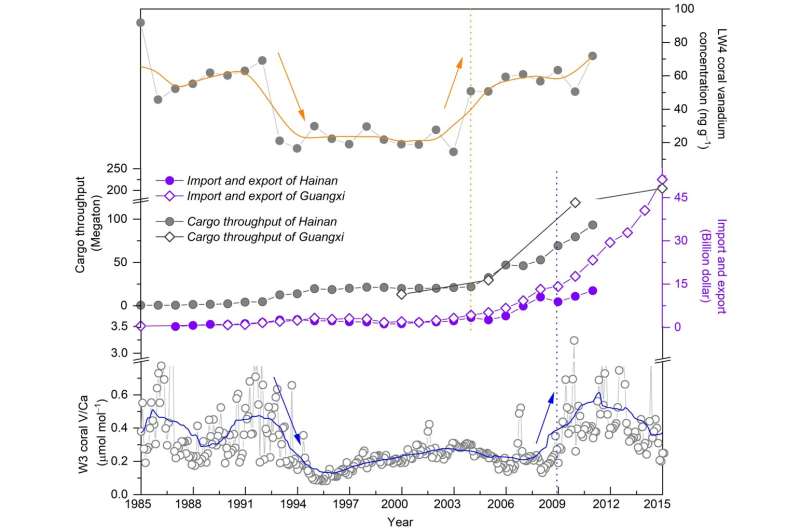Coral vanadium can record tropical cyclones and anthropogenic activities in the South China Sea

Recently, new areas of research have arisen because of environmental concerns since the Industrial Revolution that focus on vanadium cycling between the atmosphere, water and sediments. Vanadium has been widely recognized as a trace contaminant in fossil fuels, especially crude oil, due to significant vanadium enrichment, and can be released to seawater through oil spills or atmospheric deposition associated with its combustion.
In addition, oceanic vanadium has the potential to be a valuable proxy for environmental reconstruction in natural systems due to its abundance and residence time in seawater, occurrence in several oxidation states that control solubility, and role in biological metabolism.
Although the anthropogenic influence on the global vanadium cycle has a parallel influence on the global cycles of other anthropogenically mobilized metals, e.g., lead and mercury, it has received rather limited attention. In particular, the research on vanadium geochemistry in the ocean, which is the major sink for vanadium mobilized on land, has lagged much behind other metals.
Reef corals in tropical seas can provide invaluable environmental archives for trace metals in coastal water along with associated natural and anthropogenic factors, and vanadium in corals has been successfully and widely applied as a powerful tool for recording historical vanadium changes in the surface seawater of coral reefs.
A research team led by Prof. Kefu Yu (School of Marine Sciences, Guangxi University) used geochemical proxy data (vanadium/calcium (V/Ca), δ18O, δ13C, etc.) from a coral (W3) skeleton with a monthly resolution dated to 1984 CE around Weizhou Island, along with the coral (LW4) vanadium data from Hainan Island, to describe chronological variations in vanadium in the surface seawater in the northern South China Sea.

This study documented a close relationship between the surface wind and temporal patterns of V/Ca ratios recorded in an offshore non-estuarine Porites coral for the first time, suggesting great potential for the documentation of prehistoric changes in tropical cyclones. This study offered strong evidence for the connection between the remobilization of vanadium in marine sediments and oceanic redox conditions associated with vertical mixing derived by surface winds.
However, the differences between each of the intervals under human influences indicated that the sources and drivers of vanadium in the surface seawater are too complex for the coral V/Ca relationship with surface wind to be used as a simple quantitative ratio. Furthermore, this study believed that the coral V/Ca ratio might be a potential proxy for surface winds after removing artificial disturbances.
Encouraged by the consistency in the time series between the oil spills and V/Ca peaks in coral skeletons, this study recovered the historical changes in industrial development and revolution associated with anthropogenic vanadium emissions in the northern South China Sea.
In the early stage (1984 to 1993 CE), the relatively high and labile coral V/Ca ratios were related to the industrial and agricultural activities of the surrounding continent, for example, exploration, mining and transportation in the oilfields near Weizhou Island.

In the middle stage (1994 to 2008 CE), the low coral V/Ca ratios were contributed by the effective environmental initiatives after the release of the national environmental protection law. In the last stage (2009 to 2015 CE), the coral V/Ca ratios increased due to the development of the local shipping industry, with several extreme peaks associated with oil spills.
This study contributed to identifying a potential new direct geochemical proxy for tropical cyclones and anthropogenic activities that can be recovered from datable, high-resolution coral skeleton archives in coastal regions. This paper has been published in Science China Earth Sciences.
More information: Wei Jiang et al, Impacts of tropical cyclones and anthropogenic activities on marine vanadium: A unique perspective from high resolution Porites coral record, Science China Earth Sciences (2022). DOI: 10.1007/s11430-021-9993-9
Journal information: Science China Earth Sciences
Provided by Science China Press





















